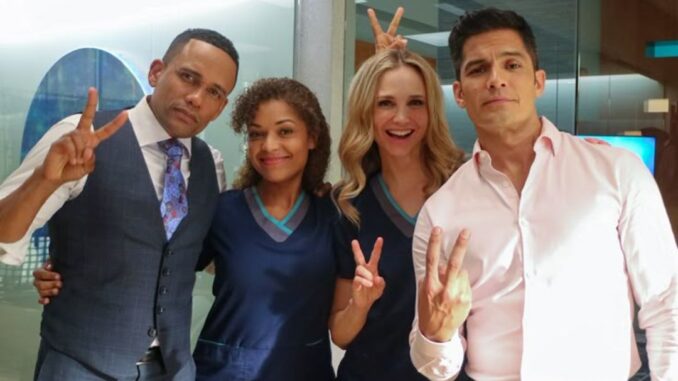
Freddie Highmore’s portrayal of Dr. Shaun Murphy in “The Good Doctor” stands as a towering achievement in contemporary television, a masterclass in character embodiment that transcends mere acting to become a profound study in human empathy and understanding. What sets Highmore’s performance apart, and what underpins the global resonance of his character, is the meticulous, almost surgical, precision with which he crafted Dr. Murphy. This wasn’t a role simply learned from a script; it was a character deeply researched, genuinely understood, and respectfully brought to life, moving far beyond the superficial to explore the complex inner world of a young surgeon with autism spectrum disorder and Savant syndrome.
The journey of crafting Shaun Murphy began long before the cameras rolled, rooted in Highmore’s profound commitment to authenticity. Recognizing the immense responsibility that came with portraying a character on the autism spectrum, especially one who would be seen by millions, Highmore dedicated himself to extensive research. This involved delving into a wealth of resources, from academic papers and psychological studies on autism to documentaries and personal narratives shared by individuals and families living with the condition. He wasn’t just seeking to understand the clinical definitions; he was striving to grasp the lived experience, the sensory sensitivities, the unique thought processes, and the distinctive communication patterns that characterize neurodiversity. This preparatory phase was crucial in building a foundation of knowledge that would inform every nuanced aspect of his performance.
Highmore actively sought input from consultants who work directly with the autism community, ensuring that his portrayal would be both accurate and respectful. He absorbed information about the subtle cues, the repetitive behaviors often associated with autism (like hand-flapping or specific verbal tics), and the challenges and triumphs individuals face in social interactions. Crucially, he also focused on the Savant syndrome aspect – Shaun’s extraordinary ability to visualize complex medical procedures and identify minute details, often in three dimensions. This required Highmore to convincingly portray a mind that processes information at an accelerated and unique pace, balancing it with the social difficulties Shaun experiences. The goal was never to create a caricature but to present a fully formed, three-dimensional human being whose autism was a part of him, not the sum total of who he was.

What emerges from this diligent preparation is a performance rich in subtle detail. Consider Shaun’s gait: often a bit stiff, sometimes slightly off-kilter, reflecting a body not always entirely at ease in space or social situations. Observe his eye contact: frequently indirect, sometimes darting away, yet capable of intense focus when examining a medical image or a patient. Listen to his vocalizations: the precise, almost melodic rhythm of his speech when explaining a medical concept, contrasted with the hesitant, sometimes strained tone when grappling with emotional or social nuances. These aren’t random acting choices; they are deliberate manifestations of his research, honed to reflect the internal landscape of someone who perceives and interacts with the world differently. Highmore understood that every small gesture, every inflection, and every moment of silence contributes to the overall authenticity of the character.
Beyond the physical and vocal manifestations, Highmore’s true genius lies in his ability to convey Shaun’s internal emotional world. Shaun often struggles to articulate his feelings or interpret the emotions of others, leading to moments of profound frustration, confusion, or unexpected joy. Highmore masterfully communicates these without words, through subtle shifts in his facial expressions – a widening of the eyes, a slight tremor of the lip, a fleeting look of vulnerability. He allows the audience to witness Shaun’s internal processing, making his journey relatable even when his external reactions might seem unconventional. This empathetic portrayal invites viewers to look beyond typical social norms and connect with Shaun on a deeper, more human level, fostering understanding and challenging preconceived notions about autism.
Furthermore, Highmore’s meticulous crafting extended to understanding Shaun’s professional environment and how his autism impacts his medical practice. He learned the specific medical terminology, the procedures, and the ethical dilemmas inherent in a surgical residency. He then layered Shaun’s unique way of thinking onto this medical framework, showing how Shaun’s visual-spatial reasoning and incredible memory are not just quirks but powerful assets in the operating room. This detailed integration makes Shaun’s medical brilliance believable and his struggles in the social hierarchy of the hospital all the more poignant. Highmore ensured that Shaun’s diagnosis was an integral part of his professional identity, not just a standalone characteristic, thus creating a character who is both medically formidable and personally vulnerable.
In essence, Freddie Highmore’s approach to Dr. Shaun Murphy was an act of profound respect and scholarly dedication. He didn’t just play a role; he inhabited a life, becoming an advocate for authenticity and a beacon of understanding for the autism community. His unwavering commitment to detail, from the broadest strokes of character behavior to the most minute expressions of internal thought, has resulted in a performance that is not only critically acclaimed but also deeply moving and culturally significant. Beyond the scalpel, beyond the hospital drama, lies the meticulous artistry of Freddie Highmore, whose dedication crafted a character that has genuinely redefined the portrayal of neurodiversity on screen and left an indelible mark on the hearts and minds of audiences worldwide.
